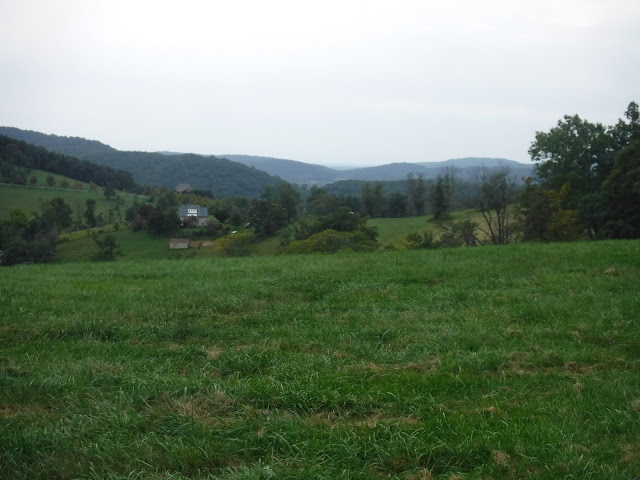Hi! Dave here. Normally, my blog entries are written in the first person plural, since they are about adventures we both have. However, one aspect of this adventure applies just to me, and it is easier to tell the whole story in the first person singular. Without further ado, the story:
Today is September 24, 2020. Twelve days ago, on a hike with Kathy and young William, I slipped on a section of wet trail with flat rocks. My feet flew up as quickly as if I had been walking on ice. I landed hard (luckily on my glutteus, without any harm), but to break my fall, I instinctively caught myself with my left arm and hand, and the strain and shock of landing that way strained every muscle, ligament and tendon from my shoulder to my thumb.
Everything is slowly recovering without permanent injury, but one unexpected result of that initial shock was that my body's resistance fell substantially while it devoted its energies to repairing the injuries. Until a couple years ago, whenever my resistance has fallen too far, I succumb to a strange allergic reaction that was caused by my walking bare-legged through hogweed, way back in 2012 in the White Mountains of New Hampshire. When the reaction is triggered, I suffer 24-36 hours of severe fever and chills. When those have finished, my left leg, which was the leg that swept through the hogweed. swells with edema and becomes blotchy with fierce red patches. My leg's skin reacts to the red patches as if it were sunbured: it itches and burns. Normally the edema and rash last for 1-2 weeks. Nothing can be done for the fever -- which in the case 12 days ago, reached 104F -- other than to take typical fever-reducing over-the-counter drugs such as ibuprofen or acetaminophen; nothing can be done for the leg swelling and rash other than to soothe it with aloe vera, and to wear compression stockings which help reduce the leg symptoms.
I had thought the allergic leg rash and fever had finally passed out of my system, because I had not experienced it for almost 3 years. So, when I suddenly fell to a 104F fever, all of the possibilities -- other than the allergic rash -- crossed my mind. The fever and chills continued into the next day, and I decided that I should be tested for Covid-19. Before the test result came back (it was negative), the fever disappeared and the leg rash appeared. It appeared clear that this was my old allergic reaction, and not the dreaded coronavirus.
I took about 9 days, until yesterday, for my body to recover from all of these plagues. While still not quite 100%, my arm is fully functional and improving rapidly. The leg rash, while I still feel it, can deal with longer hikes. So Kathy and I decided to jump on this opportunity to take another hike on the Appalachian Trail here in Northern Virginia. We will be moving up to Gettysburg this Sunday, and this would be our last chance to explore the A.T. in this area.
There is a section of the Appalachian Trail that we have not hiked, stretching between the Manassas Gap Shelter, on the south end, and the northern border of the G. Richard Thompson Wildlife Management Area on the north end. We've hiked both sides of Trumbo Hollow to the south, and we've hiked the Sky Meadow section to the north, but this would be new.
We got to the trailhead late this morning:
These are new hiking boots, which I bought this last week. After recovering from my fall, I realized that my slip on the flat wet rock was caused mostly by the worn tread on my hiking boots. I decided I needed new hiking boots, and I did some research to find boots with the most slip-resistant tread. While I was at it, I also thought that it was time to try some new technology and experiment with lighter weight boots to prepare for our training for some future backpacks. These passed all the tests! They are light as a feather, waterproof, and ultra-slip resistant. As a bonus, they also perform much better on loose pebbles and stones than my old hiking boots did.
I jabbered on about all this to Kathy as we returned down the trail. Kathy got one of her favorite types of hikes -- all downhill after lunch. We enjoyed the beautiful early Fall air and spent more time enjoying the scenery, as we knew our way back.
Approaching the lake, we saw two fishermen trying their luck after work. We felt we had already caught our limit for the day, and were happy with it.















No comments:
Post a Comment
Note: Only a member of this blog may post a comment.